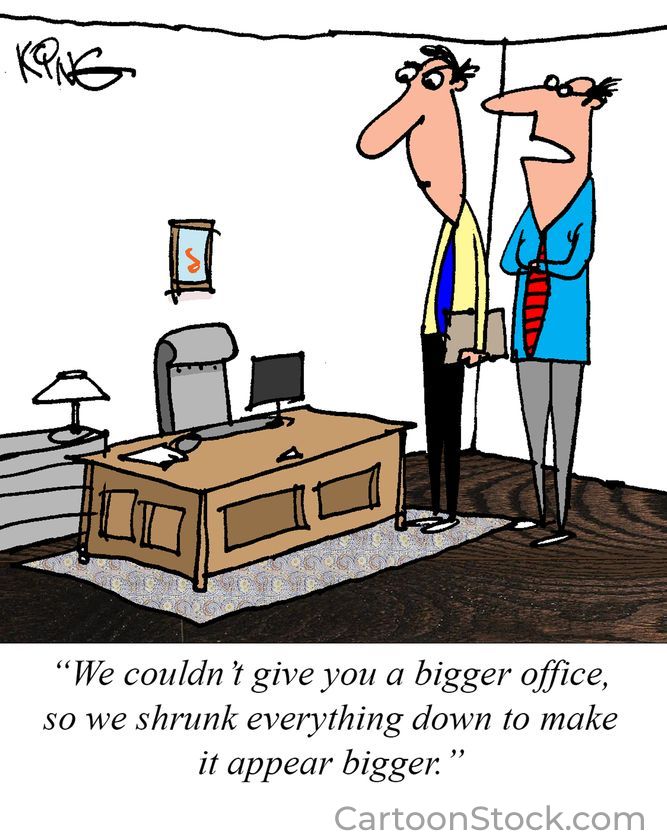by Tom Stilp JD, MBA/MM, LLM, MSC, DBA, October 14th, 2025
Employers have long believed that better amenities for employees, such as spacious offices with nice views, mean happier employees. In fact, for decades, large law firms have shown off elegant partner offices to signal high status (but remember, when you visit these firms, who’s paying for it).
A field experiment by the Ohio State University lends credence to the belief that office size does matter.
Taking advantage of an office renovation in a large insurance company where 198 employees were randomly assigned to temporary offices, Professor Greenberg and his team were able to statistically measure whether the types of offices resulted in higher employee performance (Greenberg, 1988).
The study involved the underwriting department of a large insurance company. Employees were identified according to levels, such as trainee (basic), associate (mid-level) and underwriter (highest level).
According to “equity theory,” employees who make equivalent contributions as their colleagues, but receive higher rewards compared to their colleagues, are considered overpaid (and those who receive lower rewards for the same work are considered underpaid) (Greenberg, 1988). So, underwriters would expect to get the largest offices, but in the study, they might get a smaller office and, therefore, be “underpaid.” Likewise, an associate might expect a mid-level office, but get a larger office, and be “overpaid,”
In a pretest questionnaire, employees were asked to value office characteristics, with a consensus on “status markers” valuing offices with more square footage, larger desk size, and privacy (Greenberg, 1988). Productivity was measured counting the number of cases completed within a certain time using the company’s criteria for risk.
The study found that the “underpaid” group was significantly less productive, and the “overpaid” group was significantly more productive (with a p-value <.001, meaning that there is a very low probability that the researchers would get these results by random chance).
In short, accoutrements like job title, office size, proximity to windows, larger desks and probably a host of other issues improve employee productivity. We have prepared hundreds of employment agreements that recognize “nonmonetary” benefits to encourage long-term, productive employment relationships for our business clients.
————————
References
Greenberg, J. (1988). Equity and workplace status: A field experiment. Journal of Applied Psychology, 7(4), 606-613.



